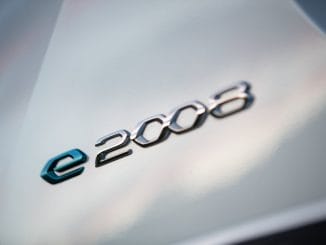
The BMW i3 Concept Coupe celebrates its European premiere in Geneva, while the BMW i8 Concept Spyder also makes an appearance. These two concept models reflect the current status of the ongoing development process and illustrate the potential breadth of an extended BMW i portfolio. At the same time they show how high-performance, zero-emission mobility is also able to deliver when it comes to emotional excitement and sheer appeal. Both models are built around BMW eDrive technology, which will provide a unique driving experience in all future BMW electric and plug-in hybrid models. These BMW eDrive powertrains, comprising the electric motor, lithium-ion battery and intelligent powertrain management, form the core of all BMW i models.
The BMW Group will start supplying customers with driver-friendly, premium-quality electric mobility later this year with the BMW i3, whose technology is a response to the social, ecological and economic challenges of our times.
Two principal challenges still faced by electric mobility are what are considered to be the short driving range of electric vehicles and an inadequate charging infrastructure. With the world’s biggest electric mobility field trial, the BMW Group has therefore been exploring these issues in depth since 2008. In the meantime more than 20 million kilometres (12.5 million miles) of testing by well over 1,000 pilot customers in ten countries has been conducted and scientifically evaluated. These trials, which took place with BMW ActiveE and MINI E vehicles in Asia, Europe and the USA, produced three main findings:
The distances covered by the electric vehicles showed very little difference from the distances covered by conventional cars, at somewhat over 40 kilometres (25 miles) a day on average.
On average, the pilot customers charged their vehicle two to three times a week, for the most part at home or at their workplace.
At the start of testing, more than 70 per cent of users said that access to public charging stations was very important to them. In actual practice, however, public infrastructure was used for less than 10 per cent of all charging.
Based on the field trial results, BMW i set out to design a BMW eDrive powertrain for the BMW i3 which in typical commuting use between home and workplace would only require the battery to be recharged once every two to three days. The BMW i3 goes well beyond this target, with a range of between 130 and 160 kilometres (80 to 100 miles) in day-to-day operation. This also allows it to cope comfortably with out-of-town journeys.
The drive system and all other vehicle functions in the BMW i3 are powered by a specially developed high-voltage lithium-ion battery. One of the hallmarks of this battery is that its energy output, and thus the range of the vehicle, is less affected by fluctuations in temperature than is typical of such batteries today. The technology behind this is an intelligent heating/cooling system which always keeps the battery at an optimal operating temperature. This improves the everyday practicality, stable performance and life expectancy of the battery.
A further priority in designing the BMW i3 was to reduce the energy consumption of electrical components. The cabin heating operates on the heat pump principle, which results in 30 per cent energy savings in city driving compared with a conventional electrical heating system, while the internal and external lighting uses energy-saving LEDs. Together, these two measures make a significant contribution to “range security” in the BMW i3.
Battery and consumer size and management are not the only measures BMW i is adopting to address range issues. The BMW i3 will also be the world’s first electric vehicle to feature full connectivity and will consequently be equipped with innovative BMW i ConnectedDrive services catering specifically to the needs of electric mobility.
These functions, which are specially adapted to BMW eDrive technology, provide drivers with a realistic range estimate for their journey before they even set out. The internet-enabled navigation system is based on a dynamic range display which takes into account all the relevant parameters for the planned route and is therefore able to provide precise, reliable range predictions. In addition to the battery charge level, driving style, use of electric convenience systems and choice of drive mode, the calculations also take into account route topography and the current traffic situation. The system can identify energy-intensive uphill gradients on the route ahead and reduces the range computation accordingly. The same goes for energy-depleting stop-go conditions or traffic jams, since detailed real-time traffic data is also taken into account.
The dynamic range display appears in the central information display, inside the navigation map. Based on the vehicle’s current location, all destinations reachable on the battery’s current charge level are shown in the form of a spidergram. Since the vehicle’s energy consumption, and therefore also its range, can be actively altered by the driver by changing to a different drive mode, the system always computes two different versions of the range graph. The range displayed depends on whether the driver has selected COMFORT, ECO PRO or ECO PRO+ mode. Depending on the destination, the Range Assistant if necessary recommends that the driver switch to ECO PRO or ECO PRO+ mode in order to increase the driving range. In the standard sporty but comfortable COMFORT mode, the BMW i3 already offers a range of 160 kilometres (100 miles). ECO PRO mode, on the other hand, selects a different accelerator pedal mapping, which uses less power and increases the driving range by around 10 per cent. In ECO PRO+ mode, all settings are geared to achieving the maximum possible range. In this mode the maximum speed of the BMW i3 is limited to 90 km/h (56 mph) and electrical consumers such as the heating and air conditioning are switched to energy-saving mode. As a result, the driving range is increased by approximately 25 per cent compared with COMFORT mode.
The driver can also ask the display to show charging stations within easy reach of his or her destination, and can reserve a slot at one of these locations at a further press of a button. The system also informs the driver how long it will take to charge the vehicle for the return journey, or to travel to a further destination. As a rough guide, in the time it takes to stop for a cup of coffee enough charge can be stored – using “fast charging” mode – to give an additional 120 kilometres (75 miles) of range.
The BMW i3 can also be supplied with an optional range extender, which increases the driving range to approximately 300 kilometres (186 miles).
If it is likely that, even using all the measures listed above, it will not be possible to reach an intended destination in the BMW i3, BMW i also offers additional mobility modules which allow even longer distances to be covered – for example a conventional BMW vehicle can be provided on a given number of days per year.





